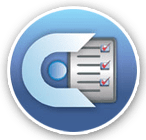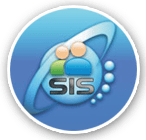It allows the rapid and accurate collection of data by using optical scanning technology to detect marked responses. Here's a general overview of how an OMR answer sheet works:
Format: OMR answer sheets typically consist of a grid or a series of bubbles or checkboxes arranged in rows and columns. Each row represents a question or item, and each column represents a possible response option.
Marking: Test takers or survey participants are instructed to mark their responses by filling in the appropriate bubbles or checkboxes. They use a pencil or a pen with a specific marking style to create a distinctive mark.
Scanning: After completion, the OMR answer sheets are collected and processed using an optical scanner. This scanner uses light sensors to detect the presence or absence of marks in the designated areas. The scanner converts these marks into digital data for analysis.
Data extraction: The scanned OMR sheets are processed using specialized software that extracts the marked data from the scanned images. The OMR software recognizes the patterns created by the marked bubbles or checkboxes and translates them into a machine-readable format.
Data analysis: Once the data is extracted, it can be analyzed using various statistical techniques or algorithms. This analysis helps in evaluating individual performance, generating reports, and gaining insights from the collected data.
Here are some key features and components of an OMR answer sheet:
Questions and options: The answer sheet contains a series of questions with corresponding answer options. Each question typically has a set of circles or bubbles associated with the answer choices.
Student identification: OMR answer sheets often include fields for students to enter their personal information, such as name, roll number, or identification number. This helps in identifying and associating the answers with the correct student.
Timing and instructions: The answer sheet may include instructions for the exam or survey, including time limits, guidelines for marking answers, and any specific rules or regulations.
Bubble recognition areas: The most crucial aspect of an OMR answer sheet is the bubble recognition areas. These areas consist of circles or bubbles that represent the answer choices for each question. Students need to darken or fill the bubble corresponding to their chosen answer using a pen or pencil.
Barcode or serial number: Some answer sheets include a barcode or a unique serial number that helps in automating the identification and sorting process. These codes can be scanned and associated with student information for accurate data processing.
Alignment marks: OMR answer sheets often have alignment marks, typically at the corners or edges of the sheet. These marks assist the scanning device in correctly detecting and aligning the answer sheet during the scanning process.
Scanning and processing: Once the answer sheets are completed, they are scanned using an OMR scanner or a compatible scanning device. The scanning process detects the marked bubbles and converts them into digital data. Specialized software is then used to process the captured data, extracting the responses and generating reports or analysis.
OMR answer sheets are commonly used in educational institutions, recruitment exams, surveys, and other situations where multiple-choice responses need to be collected and processed efficiently. They offer advantages such as speed, accuracy, and ease of data analysis, making them a popular choice for large-scale assessments.
Download CBSE Exam OMR Sheet 2023






